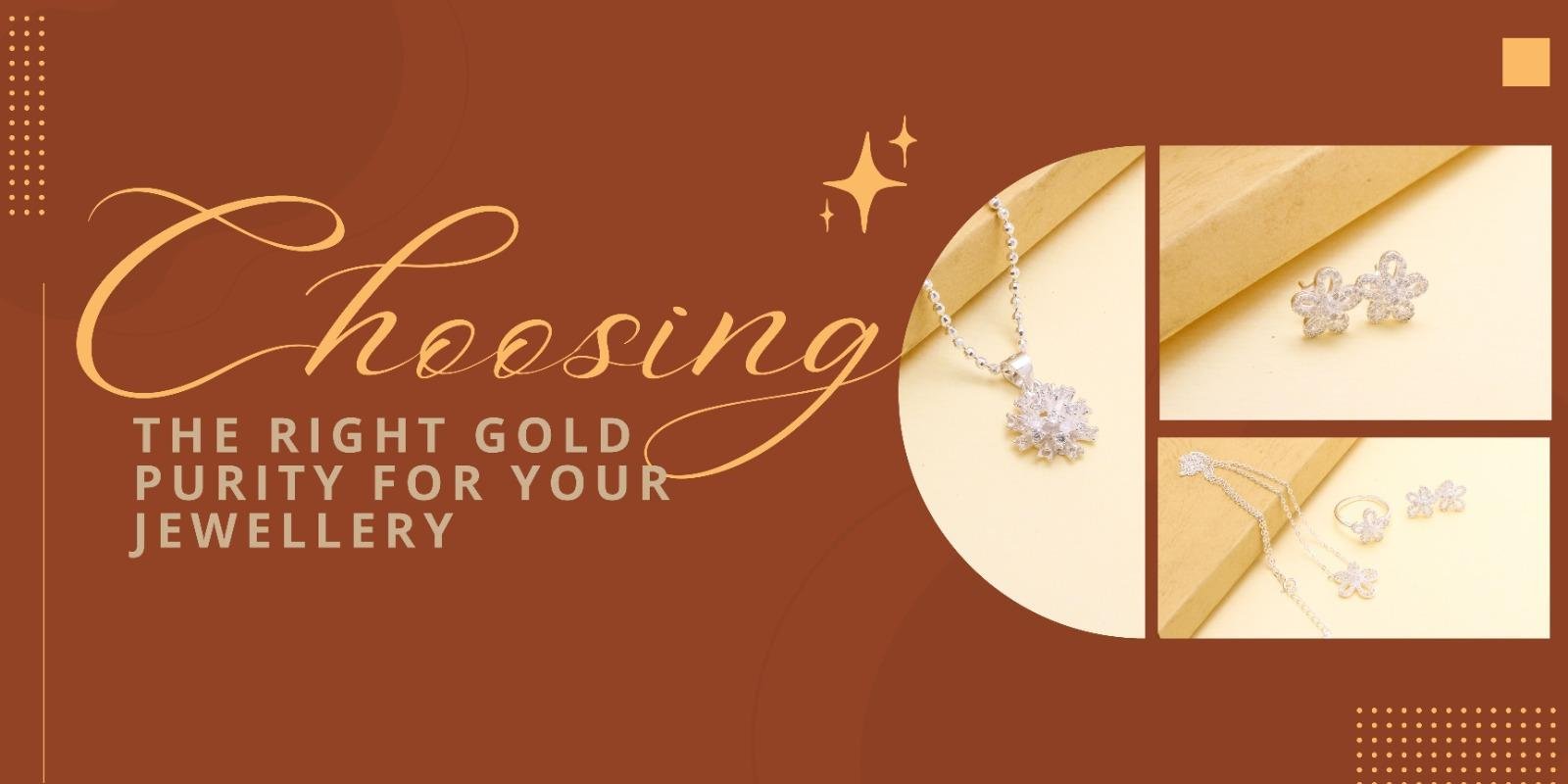Choosing the Right Gold Purity for Your Jewellery

Choosing the appropriate gold purity for your jewellery is essential for balancing aesthetics, durability, and value. This guide will help you make an informed decision by exploring various gold purities and their suitability for different types of jewellery.
Understanding Gold Purity
Gold purity is measured in karats (K), indicating the proportion of pure gold in the alloy. The most common purities used in jewellery are:
-
24K Gold (99.9% Pure): Pure gold with a rich yellow hue, but too soft for most jewellery applications.
-
22K Gold (91.6% Pure): Contains a small amount of alloyed metals, making it suitable for traditional jewellery designs.
-
18K Gold (75% Pure): A balanced mix of purity and durability, ideal for fine jewellery.
-
14K Gold (58.3% Pure): More durable due to higher alloy content, suitable for daily wear pieces.
-
10K Gold (41.7% Pure): Contains more alloys, making it very durable and budget-friendly, though less lustrous.
For a comprehensive understanding of gold purity and its implications, you can refer to the World Gold Council's guide on gold jewellery.
Factors to Consider When Choosing Gold Purity
1. Purpose of the Jewellery
-
Daily Wear: Opt for 14K or 18K gold jewellery, such as gold bracelets for women, which offer a good balance between durability and aesthetics.
-
Occasional Wear: 22K gold is suitable for pieces like traditional gold necklace designs intended for special occasions.
-
Investment: 24K gold bars or coins are ideal for investment purposes due to their high purity.
2. Durability
Higher purity gold is softer and more prone to scratches and deformation. For items like gold bangles or rings that are exposed to daily wear and tear, 14K or 18K gold is recommended.
3. Skin Sensitivity
Individuals with sensitive skin may prefer higher purity gold, such as 18K or 22K, as they contain fewer alloyed metals that could cause allergic reactions.
4. Color Preferences
The type and amount of alloy metals can affect the color of gold:
-
Yellow Gold: Achieved by mixing pure gold with alloys like copper and zinc; 18K and 22K yellow gold jewellery have a rich, warm hue.
-
White Gold: Created by alloying gold with metals like palladium or nickel and often plated with rhodium for a shiny finish; commonly found in 14K and 18K purity.
-
Rose Gold: A blend of gold and copper alloys gives a pinkish tint; popular in 14K and 18K purity levels.
For more detailed information on gold colors and caratage, visit the World Gold Council's page on gold jewellery.
5. Budget Considerations
Higher purity gold is more expensive. If budget is a concern, 14K gold offers an affordable option without compromising on durability or appearance.
Hallmark Certification
Ensure that your gold jewellery is hallmarked, indicating its purity and authenticity. In India, the Bureau of Indian Standards (BIS) hallmark is a trusted certification. For more information on BIS hallmarking, you can refer to the BIS hallmark Wikipedia page.
Conclusion
Selecting the right gold purity for your jewellery involves considering factors such as intended use, durability, skin sensitivity, color preference, and budget. By understanding these aspects, you can choose pieces that not only enhance your style but also stand the test of time.
For a curated selection of gold jewellery across various purities, visit GoldSutra to find pieces that suit your preferences and needs.
- Art
- Causes
- Crafts
- Dance
- Drinks
- Film
- Fitness
- Food
- Oyunlar
- Gardening
- Health
- Home
- Literature
- Music
- Networking
- Other
- Party
- Religion
- Shopping
- Sports
- Theater
- Wellness


